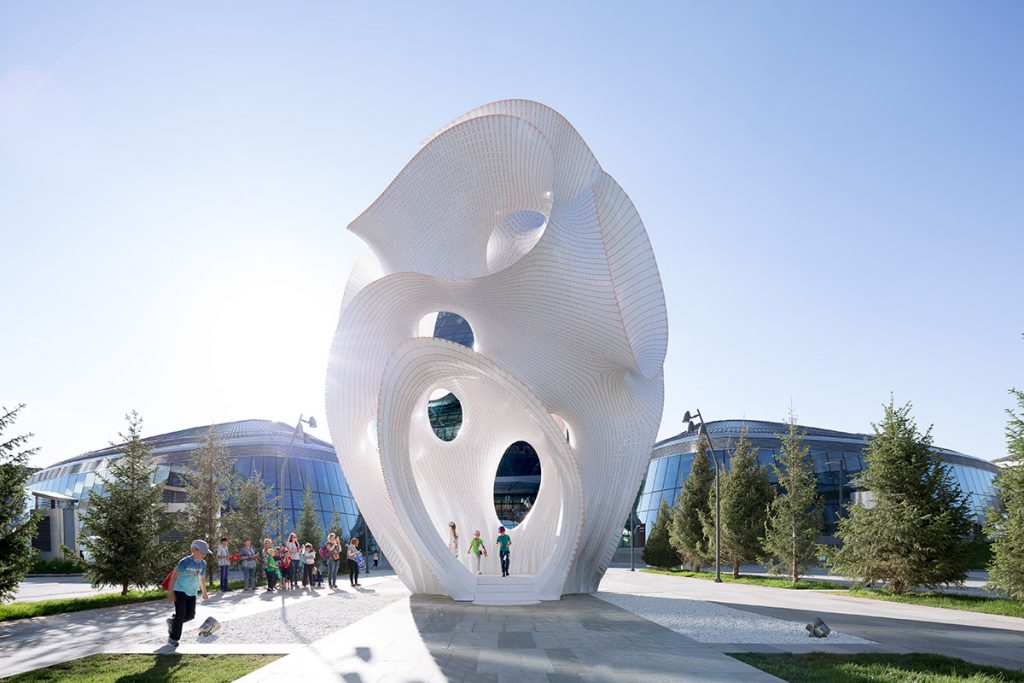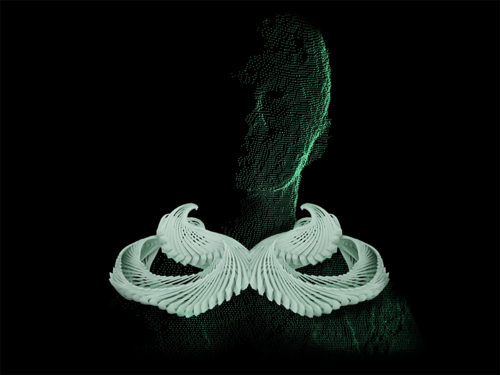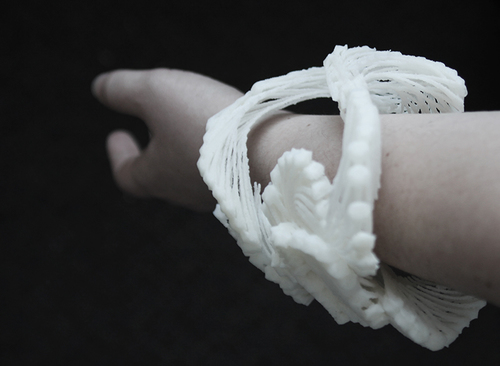Graham Murtha, Section A

The project I looked into, Aguahoja III, is an exploration of biophilic parametric design conducted by the MIT media lab. As an architecture student, parametric design is constantly brought up and analyzed in depth, but biophilic projects are harder to find, and much harder to understand. Consequently, this project is fascinating to me, because despite its label as sculpture, it reminds me of the few cases of biophilic structures I’ve seen in the past. The algorithms that created this object mimic natural processes by using organic materials like cellulose, chitin, and pectin. By enacting this strategy, the team’s 3D printers are essentially creating organic material as it would grow in nature, but in unique and complex man-made forms. Despite its computer based, parametric shape, the design still manifests visual signs of natural processes, such as layers of veins within its skin, and a decomposable exoskeleton. In other words, the team that produced this project hosted a mix of both controlled and unpredictable variables, which is a fascinating balance to create as an artist.
![[OLD SEMESTER] 15-104 • Introduction to Computing for Creative Practice](../../../../wp-content/uploads/2023/09/stop-banner.png)





 Collar Studies & Wrist Studies
Collar Studies & Wrist Studies